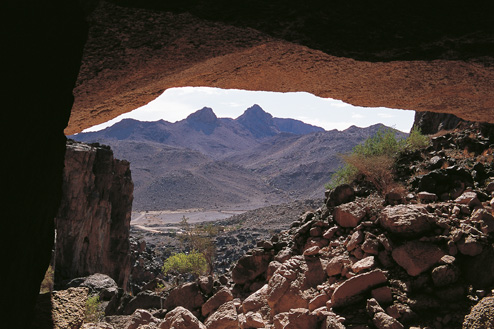Fishing
The Sultanate of Oman boasts some of the best surf fishing in the world. The coastline from Al Khaluf down to Salalah is home to a variety of species belonging to the warm waters of the Indian Ocean. Depending on where you’ve chosen to cast your line, the species you’re likely to catch include blue fish, trevally, shark, black bream, rays, grouper and spotted grunter. Blue fish will range from five pounds upwards, and ray and shark anywhere between 10 and 200.
Light and heavy tackle combos are a must for fishing these waters. All the various species tend to take turns in feeding during the day and night. Ensure your secondary tackle supplies are plentiful as you will often experience toothy beasts taking your bait. Fishing along these coastal coves is seasonal due to the severe weather conditions caused by the monsoon.
The coastline of Oman beyond Al Khaluf can be taxing on both vehicles and supplies. This is not the place for a jaunt down to the beach with rod in hand and, in fact, most people choose not to travel the roads with their boats in tow, but rather to sail from one harbour to the next. The villagers along the coastline of Oman are very friendly and always happy to help, but do remember that you’re in a Muslim country and have respect for their traditions and religious beliefs. Maps of the Oman coastline are available and it will be very helpful to have one on your first few trips at least.
Big Game Fishing
The season from October to April is best for big game fishing. The rest of the year tends to be slow, as the fish move further south to avoid the higher waters in summer. The true Indian Ocean meets the Gulf of Oman off Ras Al Hadd and you’ll clearly see the difference between the colours and surface textures of these two bodies of water. The most common big game fish during the high season is yellowfin tuna. A tricky fish to hook by nature, successful fishermen sometimes land them in weights exceeding 100 pounds. Although much larger specimens are available to offshore anglers, these are usually only caught south of Muscat or much further out than the average fisherman cares to venture. On rare occasions yellowfin tuna close to the 250lb mark have been caught within 10km of Muscat’s coast.
Sailfish dominate the waters off Muscat during September and October, and it’s thought that they migrate through the region on their way to the Arabian Gulf for breeding. They’re often caught close to shore and vary in weight from 60 to 110 pounds. Mai mai or dolphin fish are found in abundance from the end of July to September. Travelling in schools, these fish make for some fast, light-tackle action. They average about 15lb, but you might occasionally land something in the 35-45lb range. Black marlin sometimes travel into the coastal waters off Muscat but there’s only been one confirmed capture to date – and that one weighed in at a whopping 400lb. Reports that marlin can be found in greater abundance off the coastal area of Ra’s Al Hadd have been confirmed by the local commercial fisheries who estimate that an average of 10 marlin a day are brought in by their boats. The season is typically from November to April. The length of the Oman coastline is met by underwater mountain ranges and drop-offs that go down to 300m and more in some areas. Due to the deep water ridges rising up into the warm coastal shallows, an abundance of game species are found feeding on the bait fish, that in turn thrive on the nutrients brought up from the depths – an excellent example of the natural food chain.













